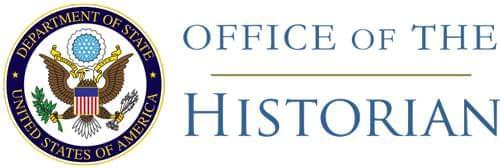I beg leave to submit herewith a chronological statement of the salient
events of the present conflict from its beginning in March of the current
year to the present date, for the convenience of the Department.
[Inclosure in No. 61.]
Chronological statement in re the war in Korea,
1894.
March 29: Kim Ok-kiun assassinated at Shanghai and great excitement
thereat in Japan where he had been for many years a refugee.
April 12: The body of Kim Ok-kiun brought to Korea in a Chinese
man-of-war.
April 14: Mr. Otori, Japanese representative here) calls a meeting of the
foreign representatives to protest against the mutilation of Kirn’s
body. The representatives remonstrated with the foreign office
unofficially, but the mutilation took place the same evening, April
14.
May—: A rebellion has for some time been disturbing the southern
provinces.
May 10: By advice of the Korean Government I called into Seoul all
American missionaries, except those in the open ports, on account of the
rebellion.
June 1: Official notice received that the rebels have defeated the
Government forces and captured Chon-ju, the provincial capital of Cholla
Do.
June 3: Chon-ju is retaken by Government forces; the rebellion
practically suppressed.
June 8: The Government announces officially that the rebellion is
ended.
June 10: Chinese land 2,000 soldiers near A-san, 40 miles south of
Chemulpo, to suppress the rebellion. This was done at Korean request,
dictated and insisted upon by Yuan, the Chinese resident.
June 10: Five hundred Japanese marines enter Seoul. They are announced as
a legation guard.
June 13: Eight hundred Japanese soldiers relieve the marines. These
troops were landed from transports just arrived. Two hundred soldiers
were left at Chemulpo and 200 along the road, where earthworks were
erected at important points, Mr. Otori, who left for his other post at
Peking May 2, returned to Seoul with these troops.
June 16: Three thousand more Japanese troops land at Chemulpo.
June 25: The foreign representatives, at the request of the Korean
Government, ask the Chinese and Japanese representatives to consent to a
simultaneous withdrawal of their respective troops. China agrees; Japan
does not. More Japanese troops arrive; 5,000 men on hand. These are said
to be an addition to the legation guard.
June 26: Mr. Otori presents his memorial on reforms to the King.
June 28: Mr. Otori demands a definite statement as to whether Korea is a
vassal of China or not. He is answered evasively.
July—: Compelled to act in the matter of reforms and wishing to act as
independently as possible while appeasing Japan, the King appoints a
council of seventeen important officials to draw up proposals for
reform.
July 15: Assault upon Her Britannic Majesty’s acting consul-general.
July 17: Her Britannic Majesty’s consulate receives a marine guard. Three
ineffectual meetings held at the foreign office regarding the neutrality
of the ports of Korea.
July 23: The palace is forcibly seized, and the Tai Wen-kun called from
long retirement to public prominence by the Japanese. Guard asked for
this legation.
July 25: The British steamer Kowshing,
transporting Chinese troops to Korea, is sunk by the Japanese near
A-san. A Chinese gunboat is also captured. The United
[Page 73]
States legation receives a guard of 50 men
and officers from the Baltimore. The Russian,
French, and German establishments are also guarded.
July 27: The British consul takes control of Chinese interests, the
Chinese officials having left for home.
July 28–29: Battle at A-san, 70 Japanese killed. Chinese lose 500 to 800
and all their stores and artillery. The main body of the Chinese (1,500
to 2,000) escape and pass up through the middle of the peninsula and
effect a junction with the Chinese at Ping-yang.
August 1: China and Japan each declare war.
August 4: Chinese troops arrive at Ping-yang under two generals; 20,000
supposed to have arrived within a few days.
August 6: The remainder of the Hiroshima army corps arrive under Generals
Nodzu and Oshima, about 30,000 men, including cavalry, artillery, and
5,000 coolies for transportation purposes.
August 15: Korea abrogates her treaty relations with China.
August 19: Korea issues official notice of an entire new plan of
government.
August 29: Foreign representatives, granted permission to ride into
palace in chairs.
September 3: Marquis Saionji, special ambassador from the Emperor of
Japan, has an audience with the King, and presents gifts from the
Emperor to the King.
September 6: Foreign representatives protest against the employment of an
undue number of governmental assistants from any one nation (L e., from
Japan).
September 12: Nagoya army corps arrives at Chemulpo under Field Marshal
Count Yamagata, with a prince captain.
September 15: Battle of Ping-yang begun at dawn.
September 17: Japanese fleet, 10 war ships and dispatch boat, encounter
Chinese fleet of 14 ships and 6 torpedo boats about halfway between Port
Arthur and the mouth of the Yalu River. Japanese destroy four Chinese
men-of-war and seriously damage others. They lose no vessels
themselves.
October 1: The rebellion reported as suppressed in June has begun with
the added horror of a disorganized, pillaging mob. Taxes are no longer
paid. Officials are robbed and often either castrated or murdered. Small
parties of Japanese have been attacked and killed with extreme cruelty
by Koreans.
October 5: Japanese take An-ju and get three guns.
October 9: Japanese drive a Chinese force across the Yalu River. No
Chinese left in Korea. A decisive battle is expected to take place soon
at a fortified place 30 miles up the Yalu River from Wei-ju, at a
junction of this river with a branch.
October 11: Prince Ye Kang, legitimated son of the King, starts for Japan
as special ambassador to return the visit of Marquis Saionji. It is
rumored that the Japanese are bringing prisoners to Seoul as an object
lesson to the Koreans.
John M. B. Sill,
United States Minister.
Legation of the United
States,
Seoul,
Korea, October 12,
1894.
